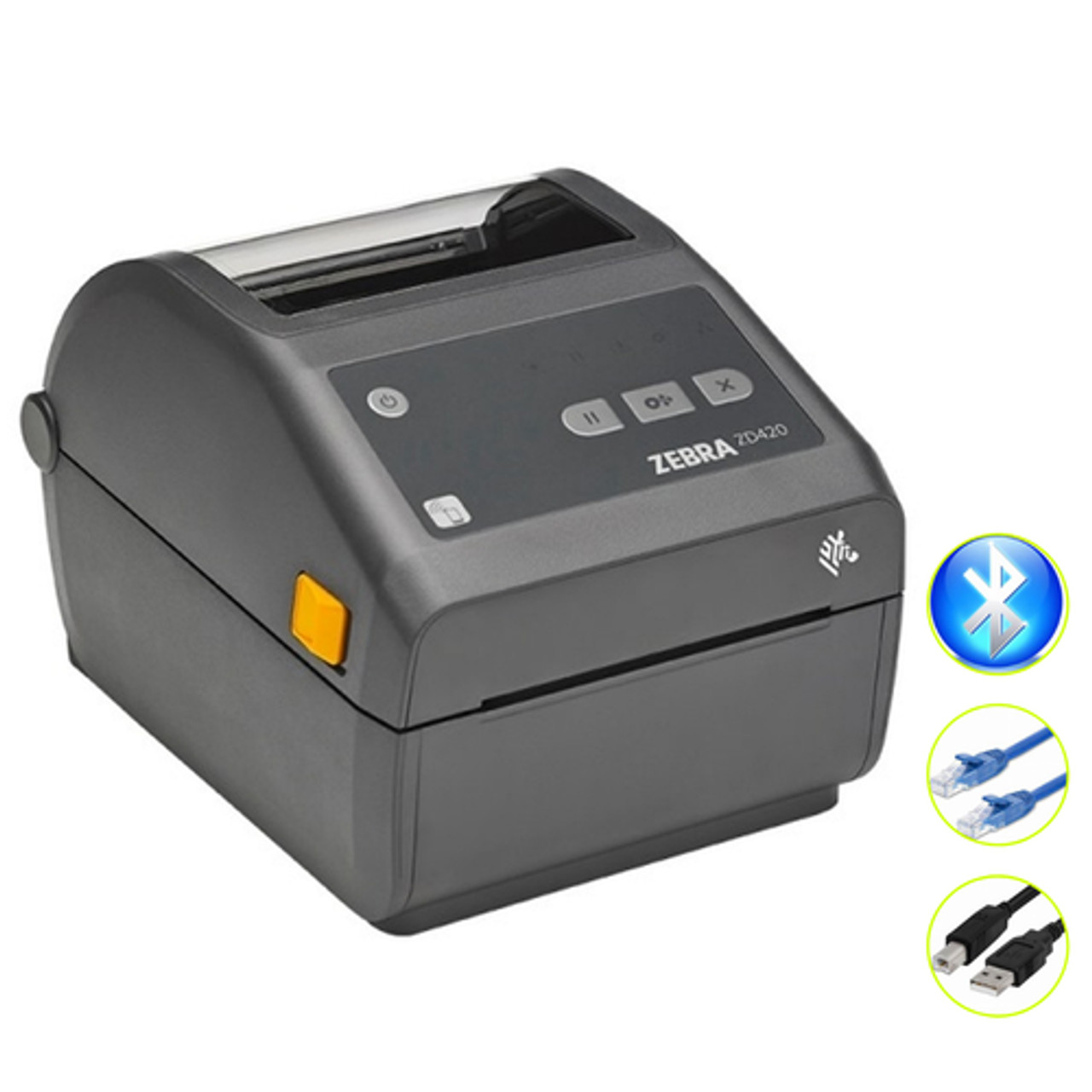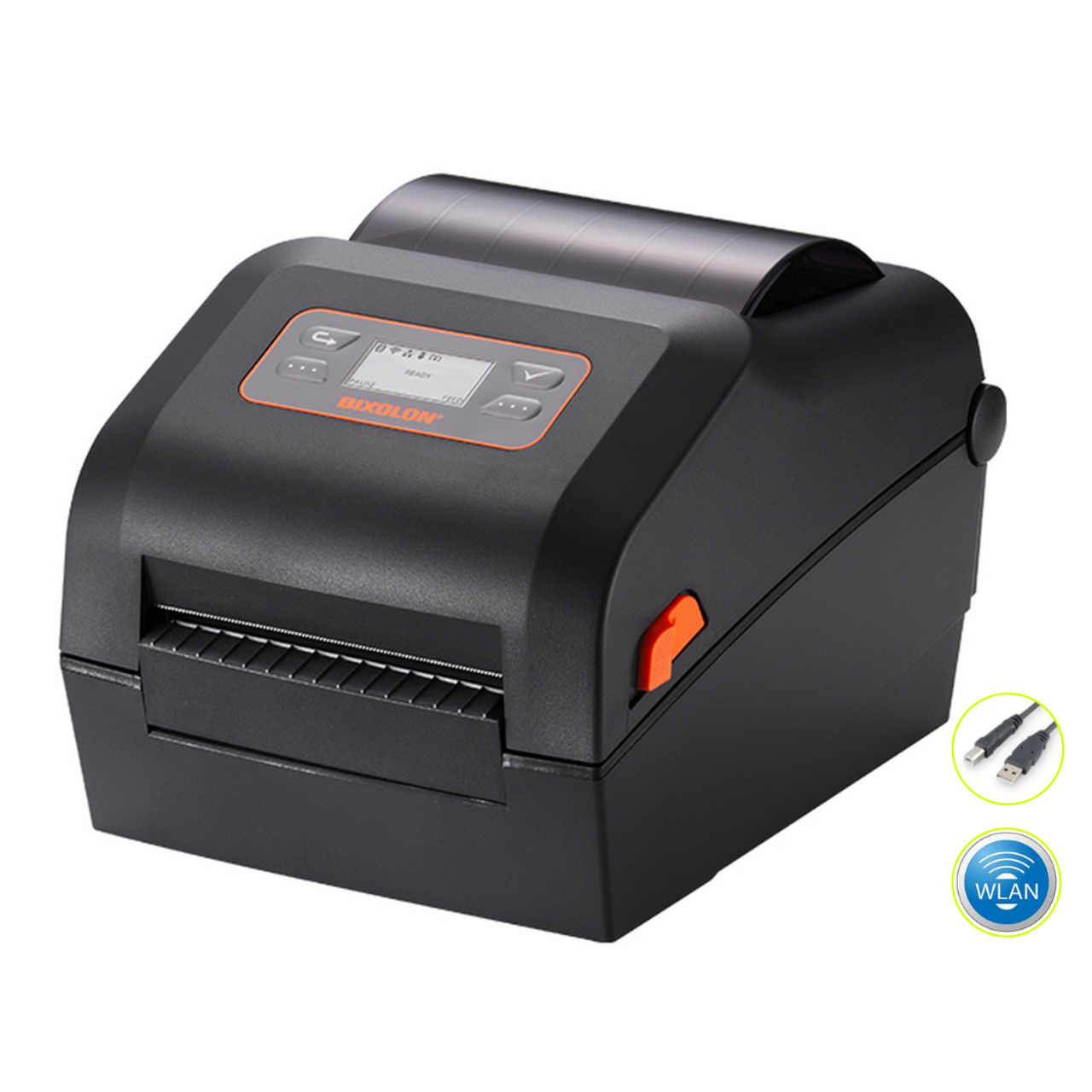What Factors Should You Consider When Choosing a Label Printer?
In the fast-paced realm of business, efficiency and organisation stand as linchpins for success. Businesses, irrespective of their size, thrive on streamlined processes and meticulous organisation to meet the demands of an ever-evolving market. Efficiency translates to optimised workflows, reduced operational costs, and faster response times – crucial elements for staying competitive in today's dynamic landscape. One often-underestimated tool that significantly contributes to efficiency and organisation is a label printer. This seemingly simple device plays a pivotal role in enhancing productivity across various sectors. By enabling businesses to generate clear, standardised labels with speed and precision, label printers facilitate smooth inventory management, quick identification of products, and accurate tracking. Whether it's for labelling packages in a shipping department, categorising assets in a warehouse, or organising files in an office, the use of a label printer ensures that information is conveyed accurately and consistently, minimising errors and promoting a well-organised work environment.
The contribution of a label printer extends beyond its primary function, becoming a catalyst for improved efficiency and heightened organisational prowess within the intricate tapestry of modern business operations.
In this blog post, we will explore the essential factors to consider when selecting a best label printer to meet your specific needs.
What are Label Printers?
Label printers or Sticker Printers are specialised devices designed for the purpose of creating and printing labels. These printers are equipped to produce high-quality, adhesive labels that find applications across various industries. Unlike regular printers, label printers are engineered to handle a diverse range of label materials, including paper, synthetic materials, and even specialised materials like polyester or polypropylene. They come in different types, with direct thermal and thermal transfer being the most common. Direct thermal printers utilise heat-sensitive paper to produce labels for short-term use, while thermal transfer printers use a ribbon to transfer ink onto the label material, making them suitable for durable and long-lasting labels. Label printers are integral to efficient inventory management, shipping, product labelling, and organisational tasks. They offer the flexibility to print labels of varying sizes and formats, contributing to the standardisation and clarity of information.
Types of Label Printers
Label printers come in various types, each catering to specific needs and applications. The two primary types of label printers are direct thermal printers and thermal transfer printers.
Direct Thermal Printers
- Operation: Direct thermal printers work by applying heat directly to the label paper. The heat-sensitive paper darkens when exposed to the thermal print head, creating the desired image or text.
- Ideal Use: These printers are suitable for applications where labels have a shorter lifespan, such as shipping labels printer, receipts, or temporary tags.
- Advantages: Direct thermal printers are relatively simple, cost-effective, and require fewer consumables since they don't use ink or toner. They are often more compact and quieter.
Thermal Transfer Printers
- Operation: Thermal transfer printers use a thermal print head to transfer ink from a ribbon onto the label material. This process results in durable and long-lasting labels.
- Ideal Use: These printers are preferred for applications requiring more robust labels, such as product labelling, asset tagging, and barcode printing. They are suitable for labels that need to withstand environmental factors or prolonged use.=
- Advantages: Thermal transfer printers offer high print quality, versatility in label material (including paper and synthetic materials), and resistance to fading or smudging. They are suitable for various industries with diverse labelling needs.
Understanding the different types of label printers allows businesses to choose the one that best aligns with their specific requirements, ensuring optimal performance and efficiency in their labelling processes.
Advantages of Using Label Printers
Label printers offer numerous advantages across various industries, contributing to efficiency, accuracy, and organisation.
Here are some key advantages of using label printers:
- Precision and Clarity: Label printers produce high-quality, clear prints, ensuring that labels are easily readable and information is conveyed accurately. This is crucial for tasks such as barcode printing, product labelling, and asset tagging.
- Speed and Efficiency: Label printers are designed for swift and efficient printing. Their specialised mechanisms and technology allow for rapid label production, facilitating timely and streamlined operations. This is particularly important in industries with high-volume printing needs.
- Versatility in Label Materials: Label printers can accommodate a wide range of label materials, including paper, synthetic materials, and specialised options like polyester or polypropylene. This versatility allows businesses to choose the most suitable material for their specific application.
- Cost-Effective Printing: Direct thermal printers, in particular, are cost-effective as they do not require ink or toner. This reduces ongoing consumable costs, making them a budget-friendly option for businesses with moderate label printing needs.
- Durability of Labels: Thermal transfer printers produce durable labels that can withstand environmental factors, handling, and extended use. This makes them ideal for applications requiring long-lasting labels, such as product labelling and asset management.
- Customisation and Flexibility: Label printers offer customisation options, allowing users to create labels with specific designs, sizes, and information. This flexibility is essential for businesses with diverse labelling needs, accommodating various products or processes.
- Easy Integration with Systems: Modern label printers come with various connectivity options, including USB, Ethernet, and wireless capabilities. This facilitates easy integration with existing computer systems and networks, streamlining the printing process.
- Reduced Error Rates: The automated nature of label printing reduces the likelihood of human errors compared to manual labelling methods. This is especially important in industries where accuracy in labelling, such as in healthcare or manufacturing, is critical.
- Enhanced Organisation: Label printers contribute to organisational efficiency by providing a standardised and consistent labelling system. This is beneficial in tasks such as inventory management, file organisation, and asset tracking.
- Adaptability to On-the-Go Needs: Portable label printers are designed for on-the-go printing requirements. They are battery-powered and offer mobility, making them suitable for fieldwork, inventory management, and other situations where printing is needed outside the traditional office setting.
- Support for Industry Standards: Label printers are designed to meet industry standards for barcoding, ensuring compatibility with various systems and scanners. This is particularly important for businesses involved in supply chain management and logistics.
Factors to Consider While Choosing a Label Printer
Choosing the right label printer involves careful consideration of several factors to ensure that the selected device aligns with your specific needs. Here are key factors to keep in mind:
Label Printer Type
Direct Thermal or Thermal Transfer: Determine whether you need a direct thermal or thermal transfer printer. Direct thermal printers are suitable for short-term labels, while thermal transfer printers are ideal for durable and long-lasting labels.
Print Resolution
Clarity and Detail: Consider the print resolution, measured in dots per inch (DPI). Higher resolution is crucial for detailed labels, small fonts, or barcode printing. Choose a printer with an appropriate DPI based on your specific requirements.
Print Speed
Efficiency: Evaluate the printing speed of the label printer. High-speed printers are essential for large-scale operations, but be sure to balance speed with the required print quality. Assess your volume needs to find the right balance.
Connectivity Options
Integration with Systems: Consider the connectivity options available. USB, Ethernet, and wireless capabilities enhance flexibility and integration with existing systems. Choose a printer that aligns with your connectivity preferences and network setup.
Label Size and Media Compatibility
Versatility: Assess the range of label sizes and types of media the printer can accommodate. A versatile printer that supports various label sizes and materials ensures flexibility to meet different labelling needs within your business.
Ease of Use
User-Friendly Features: Look for user-friendly features such as easy-load mechanisms, intuitive control panels, and user-friendly software interfaces. A printer that is easy to operate can reduce training time and minimise errors in the printing process.
Cost of Ownership
Total Cost Consideration: Beyond the initial purchase cost, evaluate the total cost of ownership. Consider ongoing expenses for consumables (labels and ribbons), maintenance, and potential repairs. Investing in a reliable, cost-effective printer can lead to long-term savings.
Brand Reputation and Support
Customer Service: Research the reputation of the brand and assess the quality of customer support offered. A reliable brand with excellent customer service ensures that you have assistance when needed and can rely on the durability of the printer.
Environmental Considerations
Adaptability: Consider the operating environment for the label printer. Some environments may require specific features, such as resistance to dust, moisture, or extreme temperatures. Ensure that the chosen printer can adapt to the conditions in which it will be used.
Industry Compliance
Meeting Standards: Ensure that the label printer meets industry standards, especially if your business involves barcoding or compliance with specific labelling requirements. This ensures compatibility with other systems and devices.
Scalability
Future Growth: Consider the scalability of the label printer to accommodate potential future growth in your business. Choose a printer that can handle increased printing volumes and evolving labelling needs.
Wrapping Up,
Choosing the right label printer involves careful consideration of your specific needs and the features offered by different models. By evaluating factors such as printer type, resolution, speed, connectivity, label size compatibility, ease of use, cost of ownership, and brand reputation, you can make an informed decision that aligns with your business goals. A well-chosen label printer is an investment that pays off in increased efficiency and streamlined operations, ultimately contributing to the success of your business.
Are you looking to buy a premium label printer at the best price? POS Sales Australia is your go-to shopping destination. Browse through our expansive inventory and shop for the perfect device to meet your label printing needs perfectly.
Need assistance? Contact us or call our POS expert @ 1300 026 062



